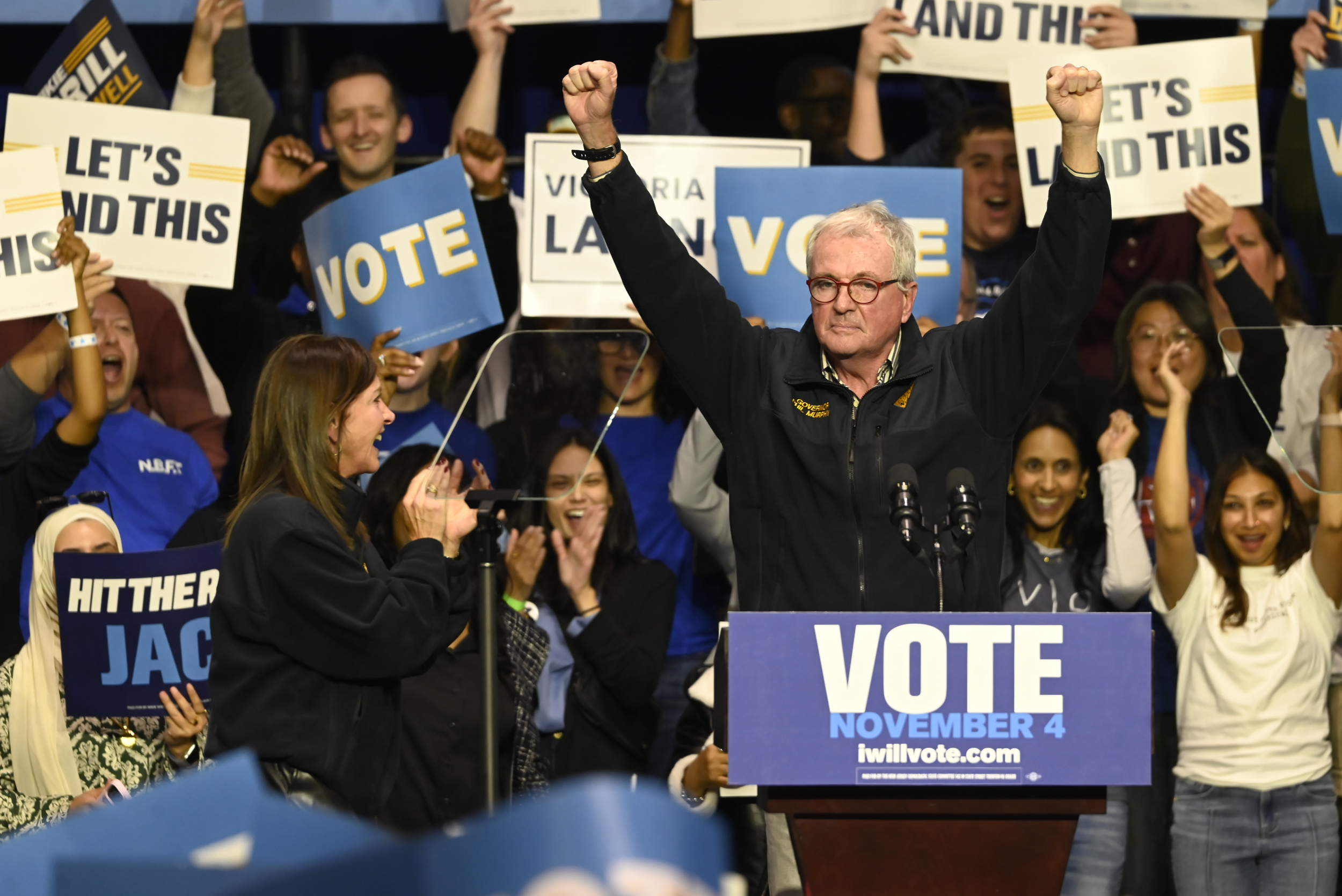LONDON, Ohio—On the western outskirts of Columbus, Ohio, two doors down from a Waffle House, is a truck stop that, as of last Friday, has the first electric vehicle charging station in the country to be financed in part by the 2021 federal infrastructure law.
The Pilot Travel Center at I-70 and U.S. 42 has four charging ports. They are part of a partnership between General Motors and Pilot that the companies say will lead to chargers being installed at 500 Pilot and Flying J locations.
At about 10:30 a.m. on a Tuesday, nobody was using the chargers.
The larger significance of this installation is that the federal government is showing progress in turning $5 billion worth of charger funding into completed projects. The expansion of the charging network is an essential part of supporting a shift away from gasoline and reducing emissions from the transportation sector.
“I am very glad to see some steel in the ground,” said Samantha Houston, an analyst for the Union of Concerned Scientists who specializes in issues related to EV charging. “I think this is a major milestone. What I would like to see and expect to see is an acceleration of away-from-home infrastructure.”
Ohio was one of the leaders in securing a share of this money, and stands to receive $140 million over five years to construct charging stations along major travel routes.
“Electric vehicles are the future of transportation, and we want drivers in Ohio to have access to this technology today,” said Ohio Gov. Mike DeWine, a Republican, in a statement.
The arrival of charging stations at the truck stop chain is a counterpoint to concerns from some EV drivers that the nation’s charging network isn’t nearly robust enough and too many chargers are broken or located in places without amenities.
At this truck stop, people can go inside to eat at an Arby’s, a Cinnabon and from a large selection of other food and drink. They can buy merchandise like a Bud Light baseball cap and a T-shirt that says “The Only Thing Tougher than a Trucker Is a Trucker’s Wife.”
The chargers are capable of offering up to 350 kilowatts, which allows for faster charging than many other stations.
“To see this project go from the whiteboard to drivers charging their EVs is a wonderful and unique experience,” said Tim Langenkamp, vice president of business development for sustainability for Pilot, in an email.
Pilot has chargers at 18 locations in nine states. The Ohio location is the first of those to benefit from the federal program.
Langenkamp said customers have had about 5,000 charging sessions on the company’s network since the first ports went online in September.
The federal money comes from the National Electric Vehicle Infrastructure program, which is one of many parts of the $1.2 trillion infrastructure law.
This story is funded by readers like you.
Our nonprofit newsroom provides award-winning climate coverage free of charge and advertising. We rely on donations from readers like you to keep going. Please donate now to support our work.
Donate Now
Some advocates for clean transportation have raised concerns that the program was taking too long to show results.
“I certainly have heard the grumbling,” Houston said. “I may also have done some grumbling myself.”
But she added that she understands that it takes time to write the rules for a large new program and then allow for time for an application process for funding.
The country had 141,714 public charging ports as of the end of June, according to the National Renewable Energy Laboratory. The Biden administration has set a goal of getting this number to 500,000 by 2030 and would like to see them available at 50-mile intervals on major highways.
Many more federally funded chargers will follow the one in Ohio. The National Electric Vehicle Infrastructure program lists projects in Alaska, Colorado, Hawaii, Kentucky, Maine and Pennsylvania.

















